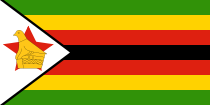Backstroke

The backstroke, also sometimes called the back crawl, is one of the four swimming styles regulated by FINA, and the only regulated style swum on the back. This has the advantage of easy breathing, but the disadvantage of the swimmer not being able to see where they are going. It is also the only competition swimming style that starts in the water. The swimming style is similar to an upside down front crawl. Both backstroke and front crawl are long-axis strokes.
Contents |
History
Backstroke is an ancient style of swimming. It was the second stroke to be swum in competitions other than the front crawl. Backstroke was first inducted into the Olympics at 1900 Paris Olympics. Those Olympics included a 200 m backstroke race. Backstroke is also almost always swum with bent arms underwater.
Speed and ergonomics
Backstroke is of similar speed to butterfly. Race times for the butterfly are superior to those for the backstroke mostly because the former allows a racing start from poolside and the latter does not. In races beyond 200 meters, backstroke would actually be the faster of the two. The maximum swimming speed for backstroke is around 1.84 meter per second. Due to its position on the back, backstroke uses different muscles in the upper body than other styles.
Technique
In the initial position, the swimmer lies flat on their back, arms stretched forward, and legs extended backwards.
Arm movement
In backstroke, the arms contribute most of the forward movement. The arm stroke consists of two main parts: the power phase (consisting of three separate parts) and the recovery. The arms alternate so that always one arm is underwater while the other arm is recovering. One complete arm turn is considered one cycle. From the initial position, one arm sinks slightly under water and turns the palm outward start the Catch phase (first part of the power phase). The hand enters downward about ten inches, catching the water.
During the power phase the hand follows a semi-circular path from the Catch to the side of the hip. The palm is always facing away from the swimming direction, and the elbow always points downward towards the bottom of the pool. This is done so that both the arms and the elbow can push the maximum amount of water back in order to push the body forward. At the height of the shoulders the upper and lower arms should have its maximum angle of about 90 degrees. This is called the Mid-Pull of the power phase.
The Mid-Pull phase consists of pushing the palm of the hand as far down as possible with the fingers pointing upward. Again, the goal is to push the body forward against the water. At the very end of the Mid-Pull, the palm flaps down for a last push forward down to a depth of 45 cm, creating the Finish of the Power phase. Besides pushing the body forward this also helps with the rolling back to the other side as part of the body movement. During the power phase, the fingers of the hand can be slightly apart, as this will increase the resistance of the hand in the water due to turbulence.
To prepare for the recovery phase, the hand is rotated so that the palms point towards the legs and the thumb side points upwards. At the beginning of the recovery phase of the one arm, the other arm begins its power phase. The recovering arm is moved in a semicircle straight over the shoulders to the front. During this recovery, the palm rotates so that the small finger enters the water first and the palms point outward. After a short gliding phase, the cycle repeats with the preparation for the next power phase.
A variant is to move both arms synchronized and not alternating, similar to an upside down butterfly stroke. This is easier to coordinate, and the peak speed during the combined power phase is faster, yet the speed is much slower during the combined recovery. The average speed will usually be less than the average speed of the alternating stroke.
Another variant is the old style way of swimming backstroke, where the arm movement formed a complete circle in a windmill type pattern. However, this style is nowadays no longer used for competitive swimming, as a lot of energy is spent on pushing the body up and down instead of forward. Furthermore, the added strain on the shoulder is considered less than ideal and can lead to injuries.
It is also possible to move only one arm at a time, where one arm moves through the power and recovery phases while the other arm rests. This is slow, but it is used frequently to teach students the movement, as they have to concentrate on only one arm.
Leg movement
The leg movement in backstroke is similar to the flutter kick in front crawl. They make a small contribution to the forward speed, yet are very significant for stabilizing the body.
The leg stroke is also alternating, with one leg sinking down straight to about 30 degree out of the horizontal. From this position the leg makes a fast kick upward, slightly bending the knee at the beginning and then stretching it again in the horizontal. However, there are also frequent variants with four or only two kicks per cycle. Usually, sprinters tend to use 6 kicks per cycle, whereas long distance swimmer may use less.
It is also possible to use a butterfly (dolphin) kick, although this is rare except the butterfly kick after the start and the turns. This dolphin kick is essential for many top athletes because it is the fastest part of the race. It may also constitute the majority of the race. ie(in the 100 yd backstroke the swimmer may kick underwater dolphin for 15 yds per length which equates to as much as 60 yds kicking in a 100 yd race) A great example of this is Olympic gold medalist Natalie Coughlin. Breaststroke kicks are most comfortable if the arms are used synchronized, as the breaststroke kick has difficulty to compensate for a rolling movement due to alternating arm cycles. The butterfly kick can be done slightly to one side depending on the rolling of the body.
Breathing
Breathing in backstroke is very easy, as the mouth and nose are almost always over water. Competitive swimmers breathe in through the mouth during the recovery of one arm, and breathe out through the mouth and nose during the pull and push phase. This is done to clear the nose of water.
Body movement
Due to the asynchronous movement of the arms, there is a roll of the body around its own axis. This is normal and helps swimming effectively. The overall position of the body is straight in the horizontal to reduce drag. Beginners frequently let their posterior sink too low and increase drag, because to avoid this the upper legs have to be moved to the extreme down position at each kick even with a little help by the back and the foot tips have to be fixed in the extreme lower position. And the head is held out of the water to act as a counter-weight.
Start
The backstroke start is the only start from the water. The swimmer faces the wall and grabs part of the start block or the wall with his hands. Ideally, there are grips on the block for this purpose. The legs are placed in shoulder width onto the wall with both heels slightly off the wall. The moment before the start the swimmer pulls his head closer to the start block, while keeping the knees bent at a 90 degree angle. Some swimmers prefer to keep one foot slightly lower than the other during the start; however, keeping both feet at an equal level is perfectly acceptable.
For the takeoff, the swimmer pushes his hands away from the block, and swings his arms around sideways to the front. At the same time he throws his head to the back. Only a minimal delay afterwards, the swimmer pushes himself away from the wall with his feet. Ideally, the swimmer's back is arched during the airborne phase so that only the feet and the hands touch the water while the rest of the body is above the water line. This reduces the drag and allows the swimmer to start faster.
After the start, the swimmer is completely underwater. Due to the increased resistance at the surface, the speed under water may for an experienced swimmer be faster than at the surface. Therefore, most experienced swimmers stay in backstroke competitions under water up to the limit set by FINA to be 15 meters after the start and every turn. Most swimmers swim a butterfly kick under water, as this provides more forward movement than the flutter kick. The underwater phase includes the risk of water entering the nose, which gives an unpleasant feeling. Most swimmers breathe out slightly through the nose to stop water from entering. It is also possible to use a nose clip. Some swimmers can close their nostril with their upper lips.
The swimmer must break the surface before 15 m. The swimmer starts swimming with one arm, followed by the other arm with half a cycle delay. The swimmer continues in regular swimming style, staying on the back for the entire time except the turns. One part of the swimmer must break the surface at any time.
Turn and finish
Approaching the wall has the problem that the swimmer cannot see where he is going. Most competitive swimmers know how many strokes they need for a lane, or at least how many strokes after the signal flags or the change in color of the separating lines. Turning the head is also possible, but slows the swimmer down.
When approaching the wall, the swimmer is allowed to turn to the breast and make one push/pull phase with one arm. Next the swimmer makes half a tumble turn forward, resting the feet against the wall. The arms are in the forward position at this time, and the swimmer pushes himself off the wall. Similar to the start, the swimmer can remain up to 15 m under water, with most swimmers using a butterfly kick for speed.
For the finish, the swimmer must touch the wall while lying on his back, less than 90 degrees out of the horizontal.
Competitions

There are three common distances swum in competitive backstroke swimming, both over either a long course (50 m pool) or a short course (25 m pool). The United States also employs short course yards (25 yard pool). Of course, other distances are also swum on occasions.
- 50 m Backstroke
- 100 m Backstroke
- 200 m Backstroke
Backstroke is also part of the medley over the following distances:
- 100 m Individual Medley (short 25 m pool only)
- 200 m Individual Medley
- 400 m Individual Medley
- 4×100 m Medley Relay
These are the official FINA rules. They apply to swimmers during official swimming competitions.
- Prior to the starting signal, the swimmers shall line up in the water facing the starting end, with both hands holding the starting grips. Standing in or on the gutter or bending the toes over the lip of the gutter is prohibited.
- At the signal for starting and after turning the swimmer shall push off and swim upon his back throughout the race except when executing a turn as set forth in SW 6.4. The normal position on the back can include a roll movement of the body up to, but not including 90 degrees from horizontal. The position of the head is not relevant.
- Some part of the swimmer must break the surface of the water throughout the race. It shall be permissible for the swimmer to be completely submerged during the turn, at the finish and for a distance of not more than 15 meters after the start and each turn. By that point the head must have broken the surface.
- During the turn the shoulders may be turned over the vertical to the breast after which a continuous single arm pull or a continuous simultaneous double arm pull may be used to initiate the turn. Once the body has left the position on the back, any kick or arm pull must be part of the continuous turning action. The swimmer must have returned to the position on the back upon leaving the wall. When executing the turn there must be a touch of the wall with some part of the swimmer’s body.
- Upon the finish of the race the swimmer must touch the wall while on the back. The body may be submerged at the touch.
Notable backstrokers
- David Berkoff
 United States
United States - Aaron Peirsol
 United States
United States - Ryan Lochte
 United States
United States - Lenny Krayzelburg
 United States
United States - Michael Phelps
 United States
United States - Mark Tewksbury
 Canada
Canada - Roland Matthes
 East Germany
East Germany - Matt Welsh
 Australia
Australia - Krisztina Egerszegi
 Hungary
Hungary - Natalie Coughlin
 United States
United States - Kirsty Coventry
 Zimbabwe
Zimbabwe - Emily Seebohm
 Australia
Australia - Hayden Stoeckel
 Australia
Australia - Antje Buschschulte
 Germany
Germany - Reiko Nakamura
 Japan
Japan - Laure Manaudou
 France
France - Arkady Vyatchanin
 Russia
Russia - Markus Rogan
 Austria
Austria
See also
- World records in swimming
Notes
External links
- Swim.ee: Detailed discussion of swimming techniques and speeds
|
|||||||||||